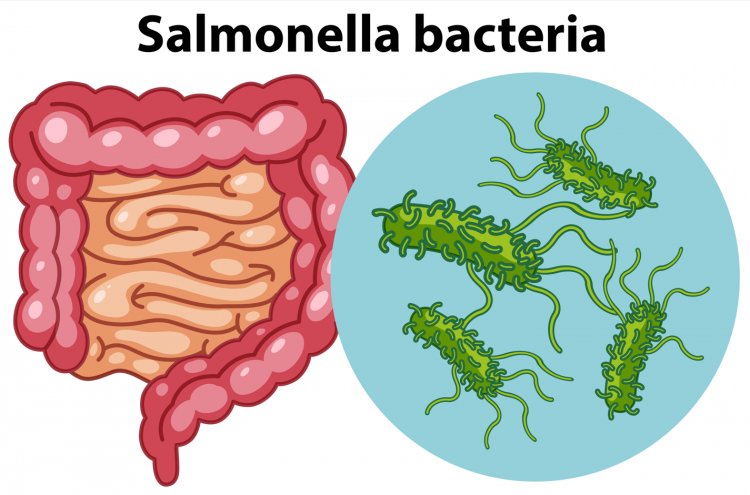Silent Invaders: How Salmonella and Shigella Spread and How to Stop Them
Salmonella and Shigella are two genera of bacteria responsible for causing a significant number of gastrointestinal infections globally. These infections can range from mild to severe and can have substantial public health implications. Understanding their biology, transmission pathways, clinical manifestations, diagnostic methods, treatment options, and preventive measures is crucial for managing and controlling these infections effectively.

Characteristics of Salmonella and Shigella
Salmonella:
Classification:
Salmonella is a genus of rod-shaped, Gram-negative bacteria belonging to the family Enterobacteriaceae.
Species:
The genus comprises two species, Salmonella enterica and Salmonella bongori. S. enterica is further divided into six subspecies and numerous serovars.
Serovars:
Over 2,500 serovars have been identified, with Salmonella Typhimurium and Salmonella Enteritidis being the most commonly associated with human infections. Each serovar is adapted to different hosts and environmental niches.
Shigella:
Classification:
Shigella is also a genus of rod-shaped, Gram-negative bacteria within the family Enterobacteriaceae.
Species:
The genus consists of four species: Shigella dysenteriae, Shigella flexneri, Shigella boydii, and Shigella sonnei. These species are differentiated based on biochemical properties and serological reactivity.
Pathogenicity:
Shigella species are highly pathogenic and require a low infectious dose to cause disease, making them highly effective at causing outbreaks.
Transmission
Salmonella:
Sources:
Transmission often occurs through the ingestion of contaminated food and water. Common sources include raw or undercooked eggs, poultry, meat, unpasteurized milk, and contaminated produce.
Routes:
The bacteria can be spread through the fecal-oral route, making hygiene and sanitation critical in preventing transmission. Secondary transmission can occur from person to person, particularly in settings with inadequate sanitation.
Shigella:
Sources:
Shigella is primarily transmitted through direct person-to-person contact, contaminated food and water, and contact with contaminated surfaces.
Routes:
The fecal-oral route is the predominant mode of transmission. Shigella is highly contagious and can spread rapidly in settings such as daycare centers, schools, and institutions with poor sanitation.
Symptoms
Salmonella:
Incubation Period:
Symptoms typically appear 6 hours to 6 days after ingestion of the bacteria.
Clinical Manifestations:
Symptoms include diarrhea (which may be bloody), fever, abdominal cramps, nausea, and vomiting. Invasive infections can occur, leading to bacteremia, endocarditis, osteomyelitis, and other severe complications.
Duration:
The illness usually lasts 4 to 7 days. Most people recover without treatment, but severe cases may require medical intervention.
Shigella:
Incubation Period:
Symptoms usually develop 1-3 days after exposure.
Clinical Manifestations:
Shigella infections, or shigellosis, often present with watery diarrhea, which may become bloody, abdominal pain, fever, and tenesmus. Severe cases can result in complications such as hemolytic uremic syndrome (HUS), reactive arthritis, and seizures.
Duration:
The illness typically lasts 5 to 7 days. Severe cases, especially in young children and the elderly, may require hospitalization.
Diagnosis
Laboratory Testing:
Stool Cultures:
The primary method for diagnosing both Salmonella and Shigella infections involves culturing stool samples to isolate and identify the bacteria.
Molecular Methods:
Polymerase chain reaction (PCR) and other molecular techniques offer rapid and sensitive detection, especially useful during outbreaks.
Serotyping:
Serological tests to identify specific serovars and species help in epidemiological studies and outbreak investigations.
Treatment
Salmonella:
Self-limiting Nature:
Most Salmonella infections are self-limiting, meaning they resolve without specific treatment. Supportive care, including rehydration and electrolyte management, is often sufficient.
Antibiotics:
Antibiotic therapy is reserved for severe cases or for individuals at risk of complications, such as infants, the elderly, and immunocompromised individuals. Common antibiotics include ciprofloxacin, azithromycin, and ceftriaxone. However, antibiotic resistance is a growing concern.
Shigella:
Antibiotics:
Antibiotic treatment is more frequently required for Shigella infections to reduce the duration of symptoms and prevent complications. Antibiotics commonly used include azithromycin, ciprofloxacin, and ceftriaxone. As with Salmonella, antibiotic resistance is an emerging problem.
Rehydration:
Oral rehydration solutions are critical for managing dehydration, particularly in severe cases involving extensive diarrhea.
Prevention
Salmonella:
Food Safety Practices:
Key preventive measures include thoroughly cooking poultry, meat, and eggs, avoiding unpasteurized dairy products, and ensuring proper food handling and storage to prevent cross-contamination.
Hygiene:
Regular handwashing with soap and water, especially after handling raw food, using the restroom, and coming into contact with animals, is essential.
Public Health Measures:
Monitoring and controlling foodborne outbreaks through robust surveillance systems and public health interventions are vital.
Shigella:
Sanitation and Hygiene:
Improving sanitation, providing access to clean water, and promoting hand hygiene are fundamental to preventing shigellosis. Handwashing with soap and water, particularly after using the toilet and before handling food, is crucial.
Public Health Interventions:
Measures include educating communities about proper hygiene practices, improving sanitary conditions, and implementing policies to control and prevent outbreaks in high-risk settings.
Vaccination:
Although there are no widely available vaccines for Shigella, ongoing research aims to develop effective vaccines as a long-term preventive strategy.
In conclusion, Salmonella and Shigella infections continue to be significant public health challenges due to their ability to cause widespread illness and outbreaks. Effective management requires a comprehensive approach, including prompt diagnosis, appropriate treatment, and robust preventive measures. Enhancing food safety, sanitation, and hygiene practices, along with continued research and public health initiatives, are essential to reducing the burden of these infections.
Disclaimer:
The information provided in this article is for educational purposes only and should not be considered medical advice. If you have any health concerns or are experiencing symptoms, it is important to consult with a healthcare professional, such as a doctor or clinic, for proper diagnosis and treatment. Always seek the advice of your doctor or other qualified health provider with any questions you may have regarding a medical condition. Do not disregard professional medical advice or delay in seeking it because of something you have read in this article.
Hashtags: #Salmonella #Shigella #Health #InfectionPrevention #FoodSafety #PublicHealth #Hygiene #Sanitation #MedicalAdvice #Healthcare
What's Your Reaction?





















